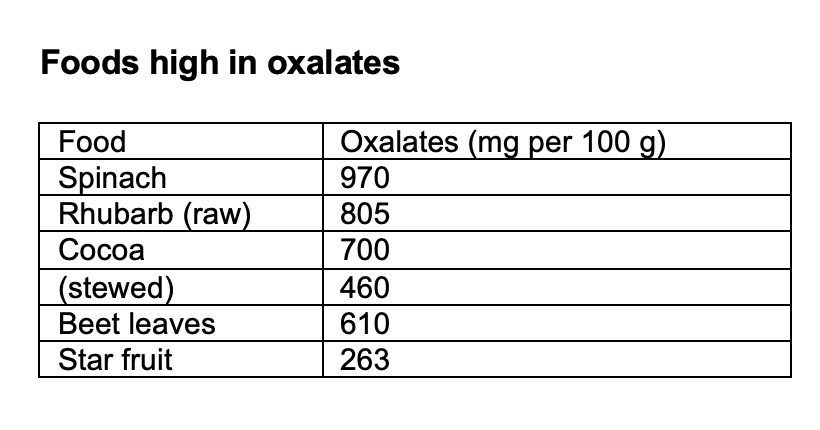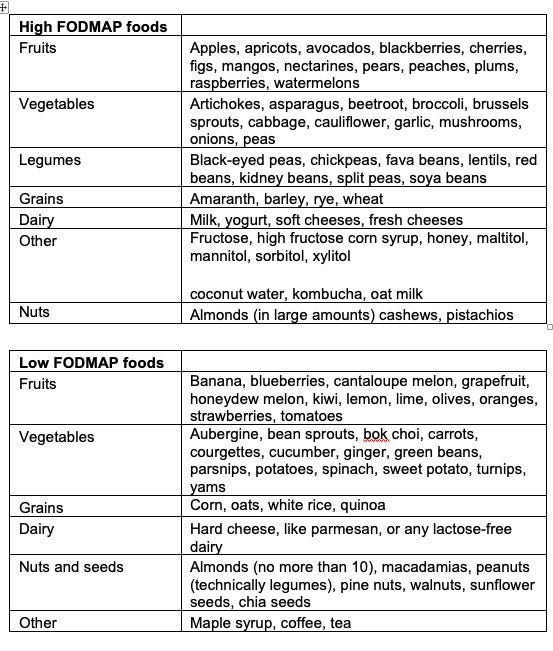Nutritional heresy No. 5: Fruit and vegetables can be bad for you
Why you might need to cut back
We’ve had it well and truly hammered into us that we should all eat as much fruit and veg as we can get down our necks. That the reason why we are all so sick with chronic disease is because we don’t eat enough plant foods, unlike all those fit and healthy immortals living in the Mediterranean regions.
That’s what we are led to believe.
What if all those healthy plant foods are, in reality, doing more harm than good? For many people, that is certainly the case, even if they don’t know it.
‘More recently, various research has questioned the healthfulness of plant-foods because of the presence of certain compounds, termed ‘anti-nutrients’.
Plant foods provide vitamins, fibre, and variety. I too like to garnish the main event on my plate with a little colour and interest. However, for others these foods provide pain and bloating, and rather more gas than might be considered acceptable.
Symptoms usually begin in the gut, but they don’t necessarily end there.
Some plant foods contain substances that are so damaging to the gut wall that they cause or aggravate intestinal permeability, or leaky gut.
Leaky gut means that the lining of the small intestine - the epithelium - has become porous. The epithelium has two main functions: to allow the passage of digested nutrients and fluids to cross into the blood, and to stop unwanted intruders from doing the same. Once in the blood, undesirable elements – toxins, undigested food particles, bacteria - have access to all areas.
One substance that creates significant damage and aggravation to the epithelium is lectin. Over 500 different types of lectins have been identified. They are found in all plant foods, especially beans (and especially soya beans), lentils, cereal grains (wheat, rye, barley, oats, corn), nuts (especially peanuts, which are legumes), and seeds. The deadly nightshade family are another source, and these include potatoes, peppers, tomatoes and aubergines.
As well as increasing gut permeability, lectins obstruct the absorption of nutrients, especially fat, protein and vitamin B12. Lectins can also provoke allergic responses, and create food intolerances by triggering the immune system.
Lectins, like other ‘anti-nutrients’, are there for a reason: they deter animals from eating the plant and they protect against insect attack and mould. Most are resistant to heat and digestive enzymes, surviving intact as they pass through the body. They can cause diarrhoea, vomiting, digestive pain and bloating, and disrupt the healthy gut microbiome.
Some plants have a different modus operandi.
You may think of leafy green vegetables as essential components of a healthy diet, but they too can cause nothing but trouble for some people.
That’s because some leafy greens are especially high in plant chemicals called oxalates.
Like lectins, oxalates are anti-nutrients, because they can bind to minerals in the gut, especially calcium, and block their absorption.
In some cases, the issue goes beyond poor absorption of minerals. High levels of oxalates are associated with the development of kidney stones because they bind to calcium in the kidneys, creating calcium oxalate stones, the most common type of kidney stone.
For that reason, people prone to this condition are often advised to avoid a diet high in oxalates.
The body also produces oxalates naturally as a waste product of vitamin C metabolism, and people with low levels of a species of gut bacteria called Oxalobacter formignes, which break down oxalate and prevent it from binding to minerals, are the ones most likely to experience negative effects, including stones.
So what constitutes a high oxalate intake? A normal daily intake from food is around 200-300 mg.
These are the foods most likely to tip you over into the high oxalate range.
Other high oxalate foods include almonds, potatoes (mainly the skin), berries, especially raspberries, and peanuts. You can reduce the oxalate content by boiling vegetables well – raw oxalates should be avoided where possible.
FODMAP fermentation
There’s a cause for every symptom, and for many people, that cause is an inability to digest certain short-chain carbohydrates, collectively known as FODMAPs. FODMAP stands for ‘fermentable oligosaccharides, disaccharides, monosaccharides and polyols’.
Instead of being digested, these sugars are left in the gut for bacteria to feast on. And what an almighty fermentation fest it is, creating inflammation and irritable bowel for the host.
Irritable bowel syndrome affects up to 15% of people in the US, mainly women. Here in the UK, with our similar diets and similar lifestyles, that figure is more or less the same.
Irritable bowel syndrome is a non-specific term, usually applied where there are gut problems of indeterminate cause.
Here’s where you’ll find these pesky FODMAPS, and what to eat instead.
It’s not just IBS sufferers who can benefit from a low FODMAP diet. So too can people with SIBO (small intestinal bacteria overgrowth).
What is SIBO? In a nutshell: SIBO arises when bacteria that should be residents of the colon have turned around and marched back up the gut and established colonies in the small intestine, where they don’t belong. They like it there because they love nothing more than the big piles of fermentable carbohydrates that their host has kindly donated.
These colonies create a range of symptoms in the upper gastrointestinal area that include burping, pain, and bloating.
There are rather a lot of these FODMAP foods, as you can see from the list above (which is not exhaustive, but covers the most common ones). But before you take fright, and abandon all hope now, be aware that in all likelihood, only some of them will be problematic for you. The only way to identify your personal nemeses is through the process of elimination. In the meantime, there are plenty of options on the low FODMAP list.
From gut to thyroid
A goitrogen is a substance that interferes with the function of the thyroid gland, increasing the risk of goitre and other thyroid diseases. Goitrogens do this either by preventing iodine uptake, or by preventing iodine from being absorbed by the thyroid gland. Iodine is a major component of thyroid hormones, and these are required for healthy metabolism and good energy levels.
There are many types of goitrogen, including glucosinolates, and these are found primarily in the Brassica family. Brassicas include cabbage, kale, Brussels sprouts, and bok choi. Another type of goitrogen is isoflavones, found almost exclusively in the soya bean.
More goitrogens are found in cassava, sorghum, sweet potato, lima beans and linseeds.
‘“Cabbage goiter” was first observed in rabbits fed a diet consisting almost entirely of cabbage’
Cooking can reduce - though not eliminate - the goitrogen content of a food, so boil your goitrogen-containing foods well rather than eat raw.
Plants are chock-full of phytochemicals that are not there for your benefit. Fruits and vegetables are great, within limits, and as long as they are supplemental to the main, protein component of your meal.








In 2006 my colon perforated from diverticulitis. Major colon resection saved me, but they left a sponge in me. Then I had three life-threatening infections and multiple iv antibiotics for weeks. (And again, I thank the surgeons and antibiotics for saving my life.)
After that my gut was wrecked and I spent years changing my diet trying to find relief from IBS pain that I finally came on my own to understand is SIBO. Along the way, as recommended, I ate *lots more fiber. I ate vegetarian. Disastrous. Then for years I had Some diminishing of pain with a low FODMAP diet, but I continued to become sensitive to/reactive to more and more foods till I barely ate anything.
Finally, in despair, in the last six months I have switched to eating Only animal-based foods: lots of red meat; poultry; fish; shellfish; eggs; and dairy (luckily I’m fine with dairy). You know where this is going, right?
My pain is gone. I have starved the SIBO (it’s not entirely gone, but I don’t want the antibiotics). I’ve lost twenty pounds. I’m no longer bloated and full of gas. I am not hungry. My life-long depression is better—completely unexpected! Ethically, I wish there were another way, but there isn’t for me.
It’s so contrary to the received nutritional wisdom (and ethical concerns) that I don’t even try to explain to friends. I wrote about this previously in your comments before I went all-out carnivore, but repeat it in case my example might help someone else.
Thank you again and going forward for sharing your knowledge.
Maria, I would go further… I think all plants are bad for everyone, it’s just that the issues are well-hidden in many people. But people’s health are sub-optimised when they eat plants. I am amazed to hear this truth from a dietician, it is just very abnormal to have someone with this qualification go against the indoctrination. Well done and thank you! Sometime in the distant future, historians will look back at what we are told to eat right now and be amazed at the ignorance.